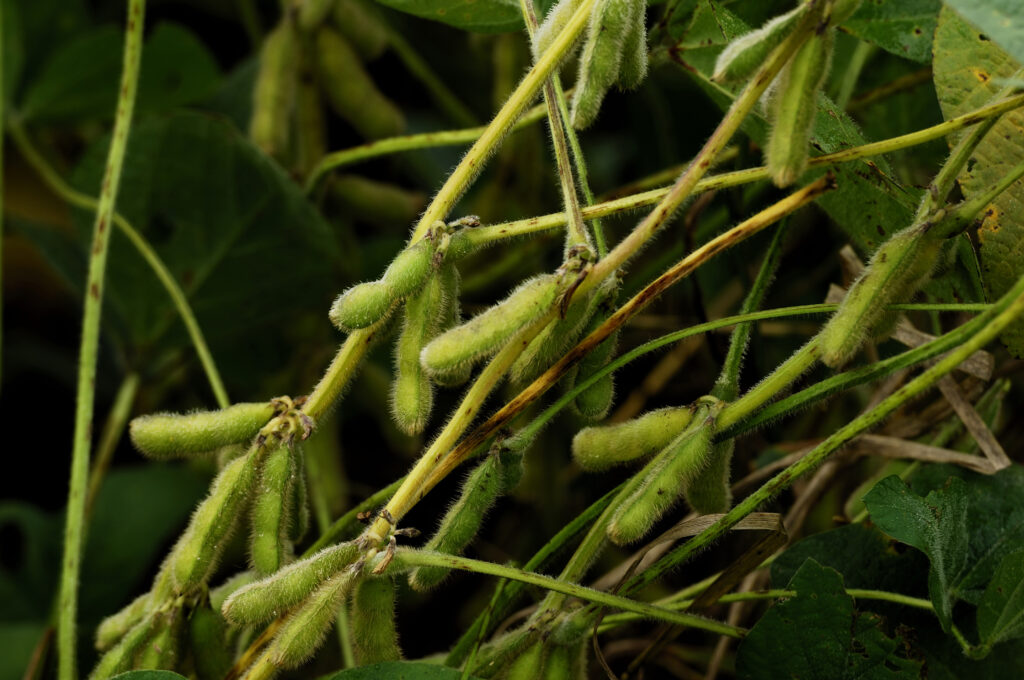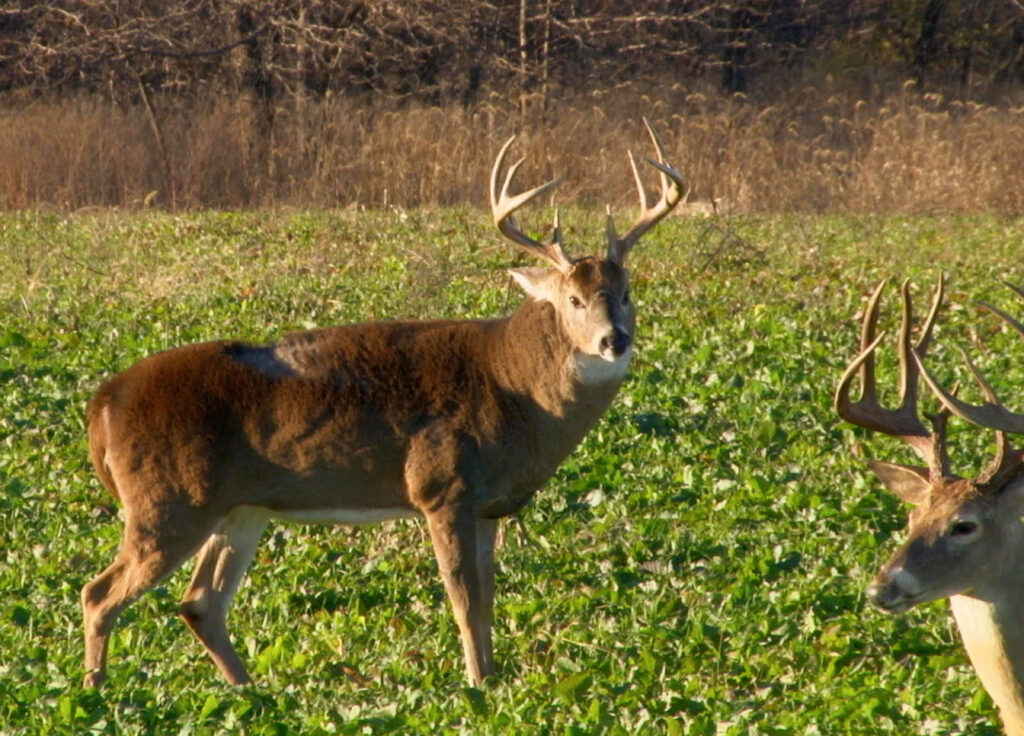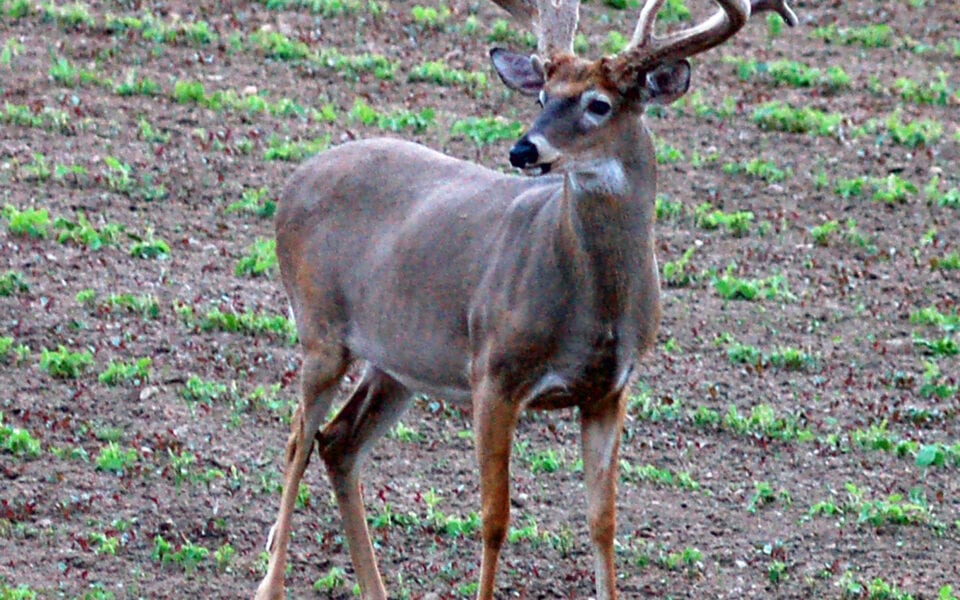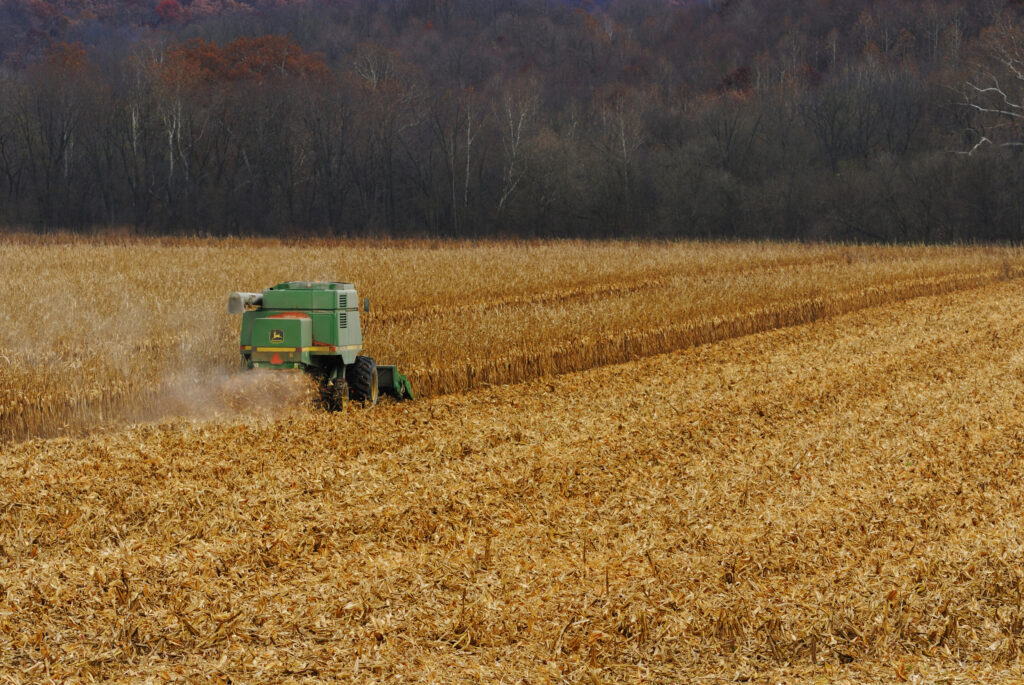Planting For Maximum Food Plot Attraction
Whitetails are characteristically fairly predictable in their summer feeding patterns. They can also be somewhat predictable throughout the rest of the fall season. Our problem in guessing which “whitetail delicacies” they will target as their primary food source(s), and when each crop will peak, comes from all the changes happening in nature during the fall – plants are changing, conditions are changing (like temperatures falling) and a whitetail’s needs are shifting. If we do a little planning and use some common sense we can plant “just what our whitetails’ ordered” in our plots.
Obviously, all of these recommendations can vary north to south and if conditions change so might their preferred food source, also. However, if you have some of each of the following crops planted you should receive action throughout the fall under most all conditions Mother Nature might throw at you. “When you plant” can also influence yield and “when the crop will be it’s most attractive.”
Opening Day
When it comes to the archery opener, I rely heavily on legumes. Whitetails are craving protein at this time and it just so happens; legumes provide a very digestible, palatable source. Both perennial legumes like clovers, alfalfa, and trefoils, and annual legumes like soybeans, iron & clay peas, lablab, etc, are protein-rich, digestible, and attractive during this time.
Many will argue about which specific clovers are most attractive, Critical Mass, Ladino, or whatever. Sure, it may be a very attractive variety, but on some days a small-leaved white will outperform, and on other days a medium-leaved white will be most attractive – the best way most gamekeepers should deal with perennials is by planting them in a blend. If you’re not going to use Clover plus, you should reconsider it, because it’s the best I’ve ever seen – it contains small, medium, and large-leaved white clovers, red clovers, and chicory. I usually add 1 lb of Alfalfa Plot Performance Additive. A mix like this dramatically extends the timeframe that the stand will be attractive. You also prevent failure – the cultivars that prefer the growing conditions and your management style will emerge to the forefront.
In my neck of the woods, here in Minnesota, whitetails normally begin to taper off perennials sometime during the first two weeks in October (remember this will be a bit later in the south). When we start to receive “20° F nights” the perennials will begin to go dormant. The colder temperatures also mean whitetails will begin to need more carbohydrates, so they make the change to cereals, brassicas, or corn.
If temperatures warm up, your perennials may “warm-up” also. I recall about 15 years ago we had a January in the Upper-Midwest when daytime highs were in the 70s for several weeks. Normally during this period we’re lucky to break 25° F and the deer are traditionally feeding on brassicas and corn, but with the warm temperatures, they wanted my Clover Plus.

Annual legumes are along the same lines – remember, for the most part, they aren’t feeding on the actual bean or pea yet. If these beans are left on the stalk and dry, they can be the primary source later in the season. However, early season is about the plants’ green foliage…the leaves. Once the first killing frost arrives all members of the annual Fabaceae family will die and the leaves turn brown and are no longer palatable to whitetails. However, again, if there are dried beans left they can be a great source of attraction long into the winter.
Where most of the annual legumes talked about are planted during the spring or early summer and whitetails feed on them until a killing frost and the plants die for the year. Winter Peas, in contrast, are planted during the late summer or fall. They are an extremely attractive cool-tolerant pea that establishes quickly and provides lush attractive forage right away. The problem with Winter Peas is they may be too attractive. You must provide enough acreage to satisfy however many whitetails are feeding on them, which will normally be “all of them.”
Another plant that deserves an honorable mention, but which is not a legume, is buckwheat. Crude protein levels range from about 15 to 25 percent, it grows very quickly (about 9 to 10 weeks), it’s adaptable to numerous soils and growing conditions, and will tolerate low soil fertility and pH…in fact, buckwheat is often used as a soil builder. One drawback is it doesn’t supply the tonnage that those legumes will, but buckwheat is a great plant to add to other plantings to extend the stand’s palatability timeframe and help build soil quality.
Pre-rut
As temperatures drop, plants lose their chlorophyll, and a whitetail’s needs begin to switch from taking in protein and putting on fat to producing energy for the rut and keeping warm. Deer will transition from protein to carbohydrates. From what I’ve witnessed over the years, this can be a gradual move, over a couple of weeks, or I’ve seen it change overnight. The rapid change usually accompanies a major cold front. But alternatively, with a warm-up, you may see a resurgence back to the appeal of perennials. So watch the weather.
During this period, which usually coincides with when the leaves are changing on the trees in your area, cereal grains should be coming on strong. Oats, wheat, triticale, rye, and other cereals, have been planted for whitetails for decades. Some used to, and some still do, plant cereals in the spring for whitetails and for soil building.
Common competition for your food plots during the first part of fall may be acorns. When available, whitetails will exploit this food source until it’s gone. Normally, they will still venture into your plots, but when acorns are available they typically won’t stay as long.
Cereal grains are most palatable to whitetails during their first stages of growth. It varies per plant type, but most cereals are hot for their first 45 to 60 days of growth. The young, tender plants are succulent and filled with both carbohydrates and protein. After around 60 days of growth the plants’ palatability, nutrient levels, and how attractive they are to whitetails all start to suffer.
Since cereals are more attractive during their first period of growth, timing their planting is important. You want to plant late enough so the most palatable time period extends into the hunting season for as long as possible, but you also must plant early enough before cold temperatures limit the yield. In the north, timing is more important and more difficult than in the south – the margin for error is usually about two to three weeks. Because of this, some will plant their cereals in stages – plant, wait a week, plant, wait a week, etc.
It’s “never an absolute” when it comes to food plots. Properties vary in so many ways, so these are common generalizations I’m making. However, your herd may already be onto corn and brassicas by now, which are both generally the most attractive during the late season. Granted, varieties like those in Deer Radish develop their sugar much earlier than the rape varieties used 20 years ago. So there are many variables that lead to when each plant type will be the most attractive in your region and on your farm.
As an example, on my property in the big woods of Ontario, my brassicas will be hit hard beginning around the first of October. First, the Deer Radish will literally be eaten to the dirt, next they’ll go after the Winter Bulbs & Sugar Beets. After that, around the end of the hunting season, they’ll move onto the Maximum and eat it until it’s gone. Here at home in Ham Lake, MN, there’s so much more and better native vegetation and cash crop farming they don’t rely on my brassicas until usually over a month later. Temperatures and trends are similar on both properties; it’s 285 miles to the north, but the average annual killing frost varies by only 8 days. In this case, the Ontario property’s increased early pressure is due, in most part too, more mouths feeding on less, lower quality food.
Corn varieties vary widely. Actual sweet corn varieties they’ll rip into as early as the end of August or the first part of September if they don’t rip it all out of the ground before it tassels.
Rut
We are likely still finding our deer using the same types of food as pre-rut unless significantly warmer or colder temperatures move in. During this time, high carbohydrates mean energy and heat.
Many gamekeepers don’t realize that for a period of about a week to ten days, bucks actually stop eating… well, they don’t completely stop. However, they do only consume about 10% of their normal diet. Their sole focus is on the perpetuation of the species! Many people had thought the reason bucks lose so much weight during the rut is that they burn it off chasing and breeding does. While obviously, this physical pursuit augments their weight loss, the main reason they can lose 25% of their body weight or more, is simply because they drastically reduce food intake for a substantial period.
The good thing is – as soon as breeding is over, bucks will “put on the feedbag!” They must try to recoup some of what was lost during the rut. It’s one time of the year that big bucks are largely predictable. During the actual breeding part of the rut, it’s really the does that are going to the food plots/sources and the bucks are mostly showing up to be “social.”
People often ask, “What is the best food plot crop to plant for attraction during the rut?” I would always answer, “IF I could only plant one thing it would be Trophy Oats.” However, there is another option I would add if I could. Deer Radish would be at the top of the list. In fact, you can plant them together. In the north, I plant them in the same plot, but in their own section. Mainly because of planting time – here in MN I typically want to plant brassicas, like Deer Radish, around mid-July, and cereal grains like oats around early to mid-August. If you want to mix them, split the difference on planting time.
During this time food sources can change week to week and sometimes day to day, varying much depending upon temperatures and weather fronts. Warm temperatures may see your clovers perk up, while cold temperatures will almost certainly send your herd to brassicas and/or corn.
Post Rut
This is my favorite time to target a mature buck. Most of the gun hunters are finished for the year, the unpredictability of testosterone and the rut is subsiding and we may even have a blanket of snow on the ground. Because of the weight drop they have incurred, mature bucks now become more vulnerable to hunters because they must start feeding again intensely to recoup some of the lost weight and fat.
If you’ve read Gamekeepers before you know brassicas are my favorite planting for several reasons. Post rut is when brassicas really shine. Radishes, turnips, rape, canola, and kale can all be major food source for late-season attractions. Which brassicas are best? It depends upon so many factors like your location (big woods or farmland, region north to south, etc), the quality of your native vegetation, what other food plot or cash crop plants are available, and others.

From my experience where I have had numerous different types of brassicas planted (and there are literally hundreds of cultivars), typically they will consume radishes first, turnips and beets next, rape and canola after that, and finally kale. In a big woods scenario, they may eat any one of them as soon as they come out of the ground and until they’re gone. Because of the progression that I’ve seen, I tend to use blends like Deer Radish and Winter Bulbs & Sugar Beets for hunting time attraction and blends like Maximum for wintertime nutrition.
Corn has always been known as attractive to deer. You could also include sorghum in this category. If I had to choose, however, I would pick brassicas over corn for several reasons, but corn definitely has its place. High in carbohydrates, corn is usually most attractive during the late season. However, if you have sweet corn varieties they may be eaten much earlier (August and September).
BioLogic’s has a relatively new product called Wildlife Sweet Corn. It’s a blend of two heirloom varieties that have over a century of proven reliability. With this corn, there is a sugar content higher than that of new hybrids so it is generally consumed earlier during the fall/winter especially when planted in areas with surrounding agricultural corn.
Remember those beans! Now, the leaves may be gone, but the dried beans that are left can be very appealing to whitetails. The problem with beans is they are poor yielding in comparison to many other food plot choices. I sometimes mix corn and soybeans together at a rate of about 15% corn to about 85% soybeans. It makes an easy wildlife plot and because of the nitrogen affixed by the beans, I’ve never found it necessary to apply a second application of nitrogen to the corn.
Join our weekly newsletter or subscribe to GameKeepers Magazine.
Your source for information, equipment, know-how, deals, and discounts to help you get the most from every hard-earned moment in the field.










